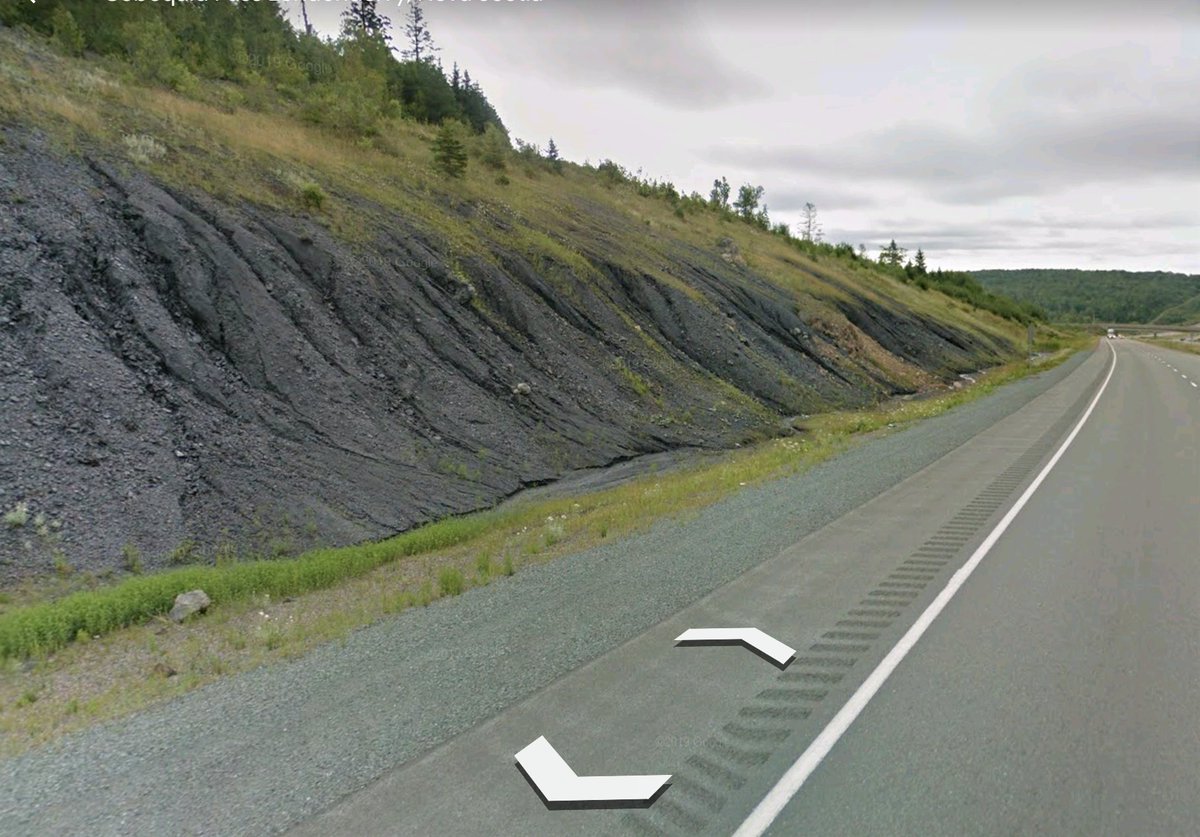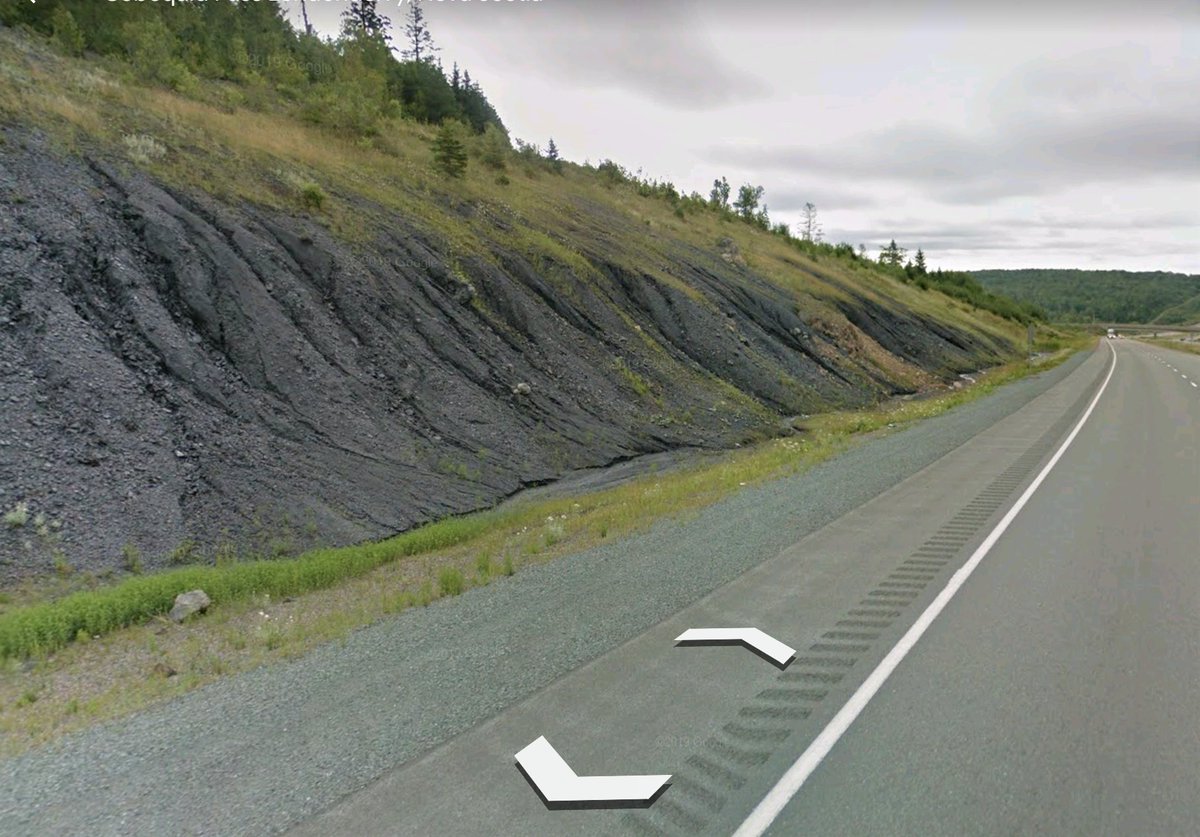We love getting questions about mining, minerals and geology! We were asked about Nova Scotia’s version of the San Andreas Fault - the Cobequid-Chedabucto Fault System!
Nova Scotia has two halves geologically...
#nspoli #cbpoli #NovaScotia #CapeBreton

Nova Scotia has two halves geologically...
#nspoli #cbpoli #NovaScotia #CapeBreton


#NovaScotia has 2 halves geologically: The northern half came from Europe and the southern half from Africa. The Cobequid-Chedabucto Fault System is where they collided 400 million years ago. This caused earthquakes, melted rocks+concentration of minerals like #gold+zinc.
#nspoli
#nspoli

People sometimes think of it as a single fault that cuts the province in half. In fact, it's a fault zone or system, not a single fault. There are several large parallel, or nearly parallel, faults that collectively make up the system.
#nspoli #cbpoli #NovaScotia #CapeBreton
#nspoli #cbpoli #NovaScotia #CapeBreton

The faults usually consist of what we call “fault gouges” - crushed and ground-up rock, sometimes a couple hundred metres thick, produced by friction between the two sides when a fault moves. Regional-scale faults like this are large and complex.
#nspoli #cbpoli #NovaScotia
#nspoli #cbpoli #NovaScotia

They are not thin, straight lines that mark where the faults are.
An example of a fault gouge is in the picture below which shows the #CobequidPass toll highway near the overpass for the #Londonderry to #Lornevale "Baseline Road.”
#nspoli #cbpoli #NovaScotia #CapeBreton
An example of a fault gouge is in the picture below which shows the #CobequidPass toll highway near the overpass for the #Londonderry to #Lornevale "Baseline Road.”
#nspoli #cbpoli #NovaScotia #CapeBreton

The rock on the left is part of a fault gouge that looks like gravel but is actually solid bedrock because the tectonic plates’ movement ground up the rock but it later solidified again. It extends for about 400 metres along the highway.
#nspoli #cbpoli #NovaScotia #CapeBreton
#nspoli #cbpoli #NovaScotia #CapeBreton

The faults weather more easily than solid rock because they have been fractured and weakened by pressure and movement. (While weathering and erosion are similar processes, they are not the same thing.
#nspoli #cbpoli #NovaScotia #CapeBreton
#nspoli #cbpoli #NovaScotia #CapeBreton

Weathering degrades a rock without changing its location. Erosion, on the other hand, causes rocks, or particles of rock, to be carried away from their original locations and deposited elsewhere.
#nspoli #cbpoli #NovaScotia #CapeBreton
#nspoli #cbpoli #NovaScotia #CapeBreton

For example, water getting into a rock and splitting it when it freezes is weathering because the rock stays in place. Water carrying pebbles and sand down a river is erosion because the location of the pebbles and sand changes.)
#nspoli #cbpoli #NovaScotia #CapeBreton
#nspoli #cbpoli #NovaScotia #CapeBreton

Unlike California’s San Andreas Fault, which is very active because the North American and Pacific tectonic plates rub against each other as the North American plate moves westward several centimetres per year, the Cobequid-Chedabucto Fault System is mostly stable.
#nspoli
#nspoli

Movement at faults is caused by stresses in the earth’s crust, i.e. the North American and Pacific tectonic plates rubbing against each other generates tremendous pressure, causing earthquakes at the San Andreas Fault to relieve the stress.
#nspoli #cbpoli #NovaScotia #CapeBreton
#nspoli #cbpoli #NovaScotia #CapeBreton

The Cobequid-Chedabucto Fault System does not have those sorts of stresses so the system is stable. Fortunately for us, Nova Scotia’s geology is much calmer now than it was 400 million years ago!
#nspoli #cbpoli #NovaScotia #CapeBreton

#nspoli #cbpoli #NovaScotia #CapeBreton


• • •
Missing some Tweet in this thread? You can try to
force a refresh



























